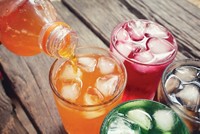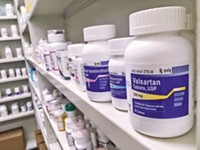Advertisement
Grab your lab coat. Let's get started
Welcome!
Welcome!
Create an account below to get 6 C&EN articles per month, receive newsletters and more - all free.
It seems this is your first time logging in online. Please enter the following information to continue.
As an ACS member you automatically get access to this site. All we need is few more details to create your reading experience.
Not you? Sign in with a different account.
Not you? Sign in with a different account.
ERROR 1
ERROR 1
ERROR 2
ERROR 2
ERROR 2
ERROR 2
ERROR 2
Password and Confirm password must match.
If you have an ACS member number, please enter it here so we can link this account to your membership. (optional)
ERROR 2
ACS values your privacy. By submitting your information, you are gaining access to C&EN and subscribing to our weekly newsletter. We use the information you provide to make your reading experience better, and we will never sell your data to third party members.
Environment
Dispute Over Benzene In Drinks
Compound is created by reaction between benzoate and vitamin C in beverages
by Bette Hileman
April 24, 2006
| A version of this story appeared in
Volume 84, Issue 17

A dispute has erupted between FDA and the Environmental Working Group (EWG) over whether some bottled and canned beverages contain unhealthy levels of benzene, a carcinogen.
Only one issue is clear: Some drinks contain ascorbic acid (vitamin C) and the preservative sodium benzoate. In the presence of ascorbic acid under certain conditions, benzene is formed through the decarboxylation of benzoic acid (J. Agric. Food Chem. 1993, 41, 693).
FDA first became aware of the problem in 1990 and asked manufacturers to reformulate their beverages. Between 1995 and 2001, FDA tested 24 samples of diet soda for benzene. Nineteen (79%) contained benzene at levels above the U.S. tap water standard of 5 ppb. The agency posted its analyses on a very difficult-to-access part of its website. In February of this year, EWG discovered these data and wrote to FDA expressing its concern.
"These results confirm our suspicions that there are highly elevated benzene levels in some very popular drinks," says Richard Wiles, EWG's senior vice president.
In late 2005, FDA began analyzing beverages containing benzoate and ascorbic acid. The majority of samples contained either no detectable benzene or levels below 5 ppb, says Robert E. Brackett, director of FDA's Center for Food Safety & Applied Nutrition.
FDA's results are preliminary. After its survey is complete, the agency will determine what, if any, additional action is necessary, Brackett wrote to EWG.
Changes in FDA's analytical procedures may account for the differences in results. To collect benzene in the earlier tests, FDA used a purge-and-trap method, in which the samples were heated to 100 °C for 30 minutes. Recently, the agency has been using a static-headspace methodology, which does not involve much heat. In the earlier tests, the high heat was probably creating benzene, says an FDA source who asked not to be identified.





Join the conversation
Contact the reporter
Submit a Letter to the Editor for publication
Engage with us on Twitter